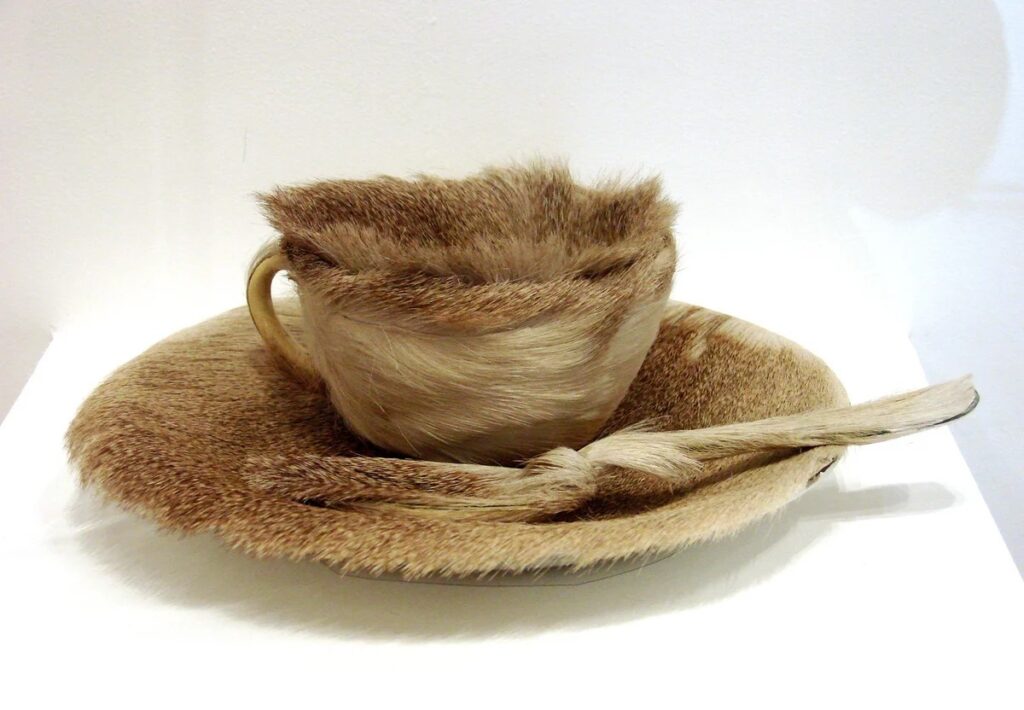

Luncheon in Fur (Oppenheim, 1936) is a precursor to the feminist art movement. This surrealist work’s title specifically references Manet’s The Luncheon on the Grass (1863) and the novella Venus in Furs. The Luncheon on the Grass was a critique of bourgeois society, depicting a bourgeois lunch in an idyllic setting, with two clothed males and two female nudes. Previously the only female nudes that were deemed appropriate were mythic depictions. Manet’s depiction of real life women was considered vulgar and highlighted the hypocrisy and voyeurism of what was considered gentile and appropriate for art. Luncheon in Fur makes a similar critique of bourgeois sensibilities with the tea set immediately invoking bourgeois custom. The fur coated cup implies the vaginal, with the fur coated spoon implying the phallic – to be dipped in the vessel. I feel this piece, by a female artist, represents how the “personal is political”, particularly its depiction of female sexuality, bringing the cup to one’s mouth implying oral sex and female pleasure, a controversial idea for its time.
I like how you connected your choice of art to a topic we discussed in class. It helps give a visual to the readings we shared. This piece seems very detailed.
Hello Neil, I really liked your choices. Even though at one glance the Luncheon In Fur painting seems as a simple cup covered in fur, it has a powerful message about how the female body is not an object for male pleasure, it’s a human body that deserves the same amount of respect as a male one. I completely agree with how this portrays the statement of “the personal is political” because something as intimate as women’s sexuality has issues that are rooted on women’s oppression and the whole patriarchal system. This work of art is completely artistic activism since it touched in a really important issue and it allows you to think and feel about it.
I love Luncheon in Fur. I always spend time with it when I visit the MOMA and they have it on display.
This is genius – using a cup, which is such a routine item in our life to convey the normality of a taboo topic. Also, I also thought about a part of this week’s article “Why Artistic Activism” when it stated that “artistic activism creates an opportunity to bypass seemingly fixed political ideas and moral ideas.” Meret Oppenheim could probably have been “canceled” by society right away if she depicted literal women with body hair, so instead, she did that in a hidden way.